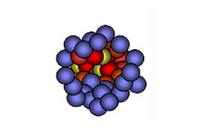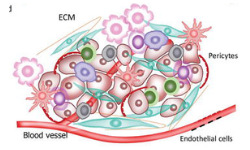In the last decade, scientific interest in the study of extracellular vesicles and exosomes has increased. In fact, associations of extracellular vesicles have even been created, such as the Spanish Group for Innovation and Research in Extracellular Vesicles, (GEIVEX). But… what is this interest due to?
Thousands of vesicles are secreted into the extracellular space each day by our cells. Depending on their origin and size, these vesicles are called exosomes, microvesicles, apoptotic bodies, etc. Exosomes are between 30 and 120 nm in size and differ from other extracellular vesicles thanks to the expression of different cell recognition molecules on their surface, such as CD9, CD63 o CD81.

Exosomes have been proposed as mediators of communication between cells (Yanez-Mo et al., 2015) and play a key role in biological processes such as angiogenesis, tumor progression, modulation of the immune response or even in the transmission of pathogens (del Portillo HA, 2022).
If you want to know more about the importance of exosomes, take a look at the following blog post: What Are Exosomes and Why Are They Important? (labclinics.com)
Biomedical applications of exosomes
Exosomes: biomarkers for diagnosis
One of the great advantages of exosomes is that they can be detected in numerous biological fluids such as blood, saliva, urine and milk. This makes them great candidates as non-invasive biomarkers for the diagnosis of many pathological processes such as chronic inflammation, neuropsychiatric disorders, spinal cord injuries, some types of cancer or certain cardiovascular diseases.
Precisely one of the research areas where these vesicles are being studied the most is oncology For instance, Mar Valés-Gómez et al, demonstrated that immunoassays for exosome-poor tumor antigens could be used for melanoma detection, opening the possibility of testing biological samples for the presence of tumor-derived exosomes using high-throughput techniques.
Exosomes as drug carriers – Drug Delivery
What if these vesicles could serve as a Trojan horse to deliver drugs? Well, that is precisely one of the most promising biomedical applications of exosomes.

Some of its advantages are:
- Their small size prevents phagocytosis and they easily pass through blood vessels and extracellular matrix.
- Its stability in biofluids.
- Greater biocompatibility.
- Less immunogenicity.
- They cross the blood-brain barrier.
In this review, Li P. et al, treat exosomes in medicine, both in diagnosis and for treatment.
Isolation and characterization
If you already work with exosomes, you will know that the heterogeneity in size, content, function and origin of exosomes makes their isolation, purification, analysis and characterization difficult (Saleem A. et al).
Some of the exosome isolation techniques are ultracentrifugation, size-based isolation techniques, polymer precipitation, or immunoaffinity chromatography.
If you are interested in isolating and purifying exosomes in your lab in a simple, fast and cheap way, take a look at Cell guidance systems’ Exo-spin, exosome purification kits that combine precipitation and SEC.
For more information on how to isolate, characterize or use exosomes, do not hesitate to contact us:










Leave a reply